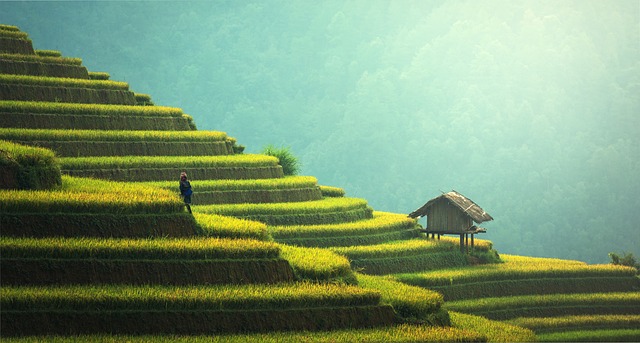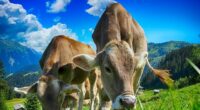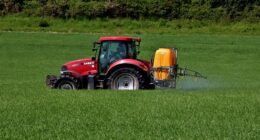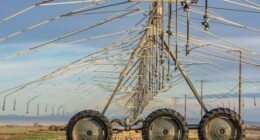Agriculture focuses on large-scale cultivation for mass food production, horticulture emphasizes the cultivation of plants for ornamental purposes and smaller-scale food production.
TL;DR Agriculture Vs. Horticulture
Sustainable agriculture and horticulture are vital for long-term food security and environmental health.
They involve practices like soil management, water conservation, and pest control. Sustainable approaches reduce negative impacts, promote biodiversity, and enhance soil fertility, ensuring a healthier planet and a stable food supply for the future.
What is Horticulture?
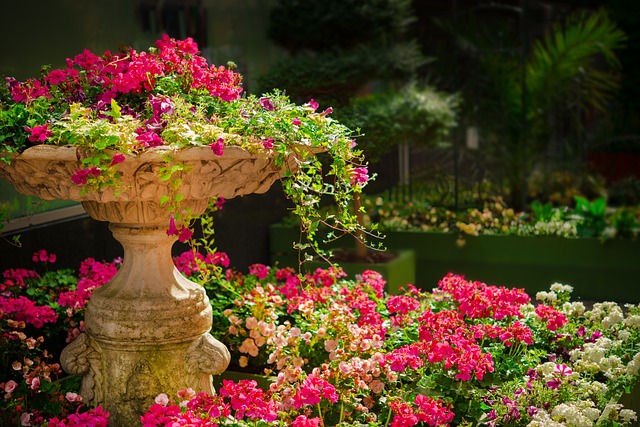
Horticulture, is a branch of agriculture that focuses on the science and art of cultivating plants. It encompasses a wide range of activities such as plant propagation, breeding, production management, and landscape design.
In horticulture, plants are carefully cultivated for various purposes including food production, ornamental displays in gardens and parks, medicinal uses, and even environmental conservation.
Horticulturists often work with flowers and ornamental plants to create visually stunning landscapes. From vibrant rose gardens to meticulously manicured topiaries.
What is Agriculture?

Agriculture is the practice of cultivating crops and rearing animals for food, fiber, medicinal plants, and other products used by humans. It encompasses a wide range of activities such as planting, irrigation, harvesting, and animal husbandry.
One key aspect of agriculture is crop cultivation. Farmers carefully select suitable seeds or plant cuttings and provide them with optimal conditions for growth. They monitor soil fertility, manage pests and diseases, and ensure adequate water supply.
Animal husbandry is another important component of agriculture. Livestock farming involves raising animals like cattle, poultry, pigs or sheep for meat production or dairy purposes.
The benefits and drawbacks of horticulture
Benefits of Horticulture
- Aesthetics and Well-being: Horticulture enhances surroundings with visually appealing landscapes, positively impacting mental well-being and reducing stress through nature’s therapeutic effects.
- Local Food Production: Horticulture contributes to self-sufficiency by cultivating fruits, vegetables, and herbs, ensuring access to fresh and nutritious produce.
- Biodiversity Conservation: Horticulturists safeguard endangered plants, preserving genetic diversity and supporting ecological balance.
- Medicinal Plant Cultivation: Horticulture connects nature with health remedies, facilitating the cultivation of medicinal plants for traditional and modern treatments.
- Cultural and Artistic Expression: Horticulture allows artistic expression through garden design, fostering cultural traditions and personal creativity.
Drawbacks of Horticulture
Labor-Intensive: Tending to plants demands significant time and physical effort, making horticultural activities labor-intensive.
- Scale Limitations: Horticulture’s smaller scale may not suffice for large-scale food production, limiting its capacity to address global food demands.
- Pest and Disease Vulnerability: Horticulture is susceptible to pest and disease infestations, requiring vigilance and potentially chemical treatments.
- Weather Dependency: Horticulture’s outcomes can be influenced by unpredictable weather, leading to yield variations or losses.
- Resource Consumption: Elaborate ornamental horticulture landscapes can incur high maintenance costs and resource consumption, posing environmental challenges.
The benefits and drawbacks of agriculture
Benefits of Agriculture
- Food Security: Agriculture ensures a stable food supply, addressing the nutritional needs of growing populations.
- Economic Contribution: It drives economic growth by generating employment opportunities and supporting trade.
- Raw Materials: Agriculture provides raw materials for various industries, including textiles, biofuels, and pharmaceuticals.
- Rural Development: Agriculture strengthens rural communities, promoting infrastructure development and livelihoods.
- Innovation and Technology: It drives advancements in agricultural science and technology, improving efficiency and sustainability.
Drawbacks of Agriculture
- Environmental Impact: Intensive farming practices can lead to soil degradation, water pollution, and deforestation.
- Biodiversity Loss: Monoculture crops and use of pesticides can contribute to biodiversity decline.
- Resource Depletion: Excessive water usage and soil nutrient depletion may lead to long-term resource scarcity.
- Climate Change: Agriculture contributes to greenhouse gas emissions through livestock production and land-use changes.
- Dependency on Weather: Agricultural outcomes are vulnerable to weather variations, impacting yields and stability.
Agriculture Vs. Horticulture – Key differences
| Aspect | Agriculture | Horticulture |
|---|---|---|
| Scope | Large-scale cultivation of crops and livestock | Diverse cultivation of plants, often on a smaller scale |
| Focus | Food, fiber, and raw material production | Food, aesthetics, ornamental plants, medicinal herbs |
| Scale | Extensive, commercial | Varied, from subsistence to commercial |
| Techniques | Mechanized, advanced technology | Often labor-intensive, emphasis on care and precision |
| Biodiversity | May lean towards monoculture | Emphasizes diverse plant species, biodiversity |
| Environmental Impact | Can be intensive, affecting land and water resources | Often more sustainable, may have lower environmental impact |
| Objectives | Primarily economic, feeding populations | Aesthetic, cultural, ecological, and food-related goals |
| Example Crops | Wheat, corn, rice, soybeans, livestock | Fruits, vegetables, flowers, ornamental plants, herbs |
The types of crops grown in agriculture and horticulture
Agriculture
- Cereals: Wheat, rice, corn, barley, oats, rye.
- Oilseeds: Soybeans, sunflower, canola, cottonseed.
- Pulses: Lentils, chickpeas, peas, beans.
- Fiber Crops: Cotton, jute, flax.
- Staple Foods: Potatoes, cassava, yams.
- Forage Crops: Alfalfa, clover, grasses for livestock feed.
Horticulture
- Fruits: Apples, oranges, grapes, strawberries, bananas.
- Vegetables: Tomatoes, carrots, lettuce, broccoli, peppers.
- Herbs: Basil, mint, rosemary, thyme, cilantro.
- Ornamental Plants: Roses, tulips, daffodils, lilies.
- Medicinal Plants: Aloe vera, lavender, chamomile, ginseng.
- Nuts: Almonds, walnuts, pistachios.
- Spices: Cinnamon, cloves, black pepper, nutmeg.
- Aromatic Plants: Lavender, eucalyptus, lemongrass.
- Bulbs: Daffodils, tulips, lilies.
Image Credits
Featured Image By – Sasin Tipchai from Pixabay
